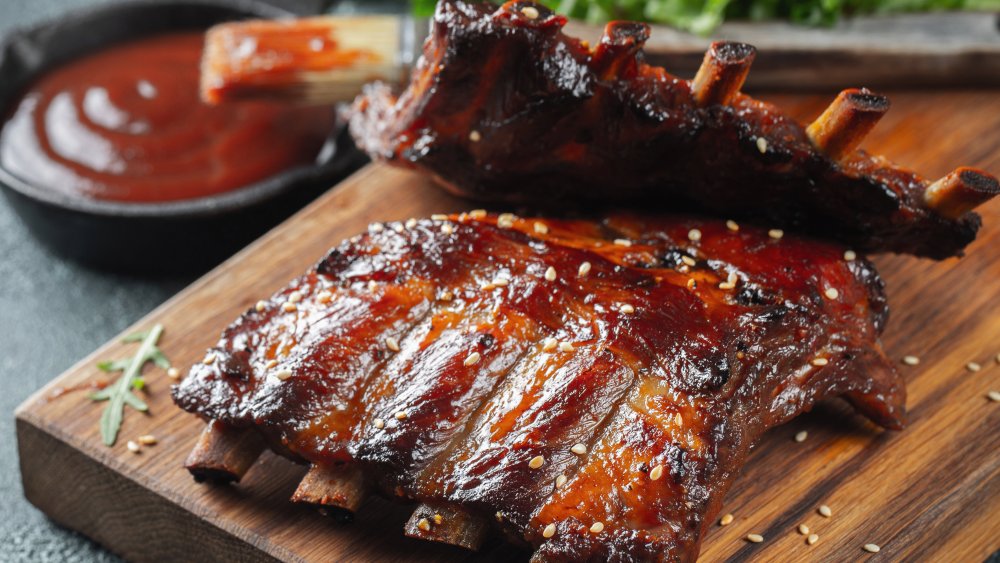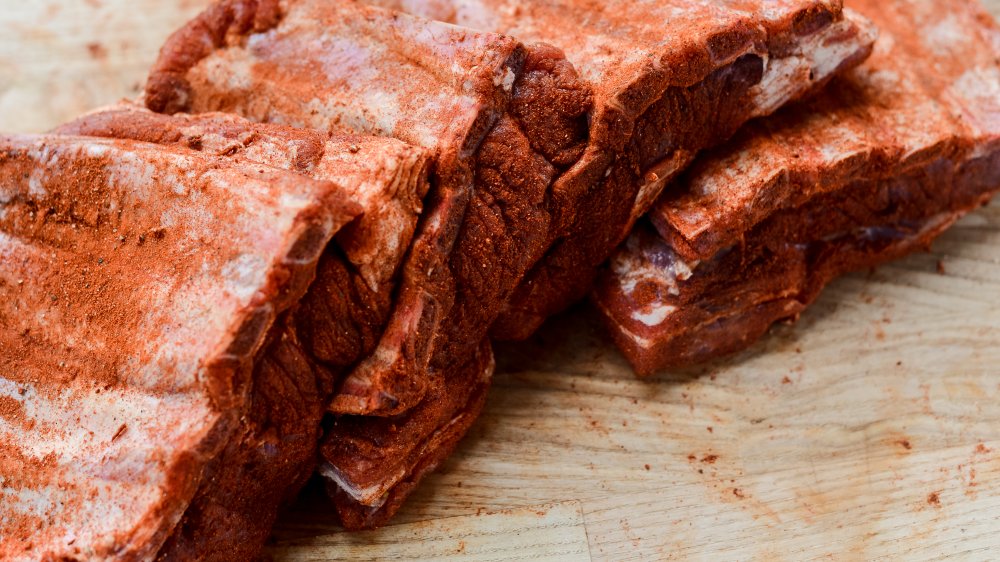The Real Reason Pork Dries Out So Easily
Pork tastes great in many forms: braised with sweet sauce, pulled pork, or even pork pies with mustard on the side. But it can be one of the hardest meats to master when you're finding your way around the kitchen. Maybe you've excitedly prepared a pork dish and followed the recipe meticulously only to find out that the meat is too dry for your taste. Whether you are a fan of pork chops or tenderloin, you've probably wondered why it is so hard to actually get it right when you're cooking pork at home.
One reason might be that you've been taught to cook it wrong. As per Michigan State University, old guidelines for cooking pork often made things messy as they called for meat that's well-done, leading to overcooking. Updated USDA guidelines say pork only needs to reach an internal temperature of 145 degrees Fahrenheit. Use a thermometer to monitor the temperature, and after it reaches 145 degrees, let it rest for around three minutes before serving the dish.
However, sometimes the problem is the cut of pork itself. If you've often found yourself struggling to get it right, maybe you can't help but feel despair as you ask yourself whether there's a way out of this mess. Don't worry, help is at hand.
Pork leg is one of the trickiest cuts out there
As explained by the Guardian, pork leg can be really hard to get right, and even experienced chefs sometimes cannot help treading cautiously when it comes to preparing this cut. It often ends up overcooked despite our best efforts. "It's quite a complex cut," seasoned chef James Ferguson said. "Unlike other pork, it doesn't have much connective tissue or covering fat, which is why it often ends up dry."
According to Ferguson, the best thing to do is braise the pork leg instead of attempting to roast it. Perhaps add a mixture of garlic, herbs, stock, shallots, and stock. The key is to go slowly and also use little heat, somewhere around 250 degrees Fahrenheit in a fan oven. "And to counter that tendency to dryness, introduce some fat in the form of bacon or lard, which will help enormously, as will an overnight salting or a couple of days in a 3 percent brine," the chef added.
Additionally, it's worth noting that other cuts such as pork belly and chump can be easier to cook (via Delicious Magazine). One of the best ways to avoid drying out pork is not to cook it immediately after taking it out of the fridge, which will cause it to cook unevenly (via The Kitchn). Let it sit for about 15 minutes to reach room temperature before cooking it. Follow these various tips, and hopefully, you'll be all set!

